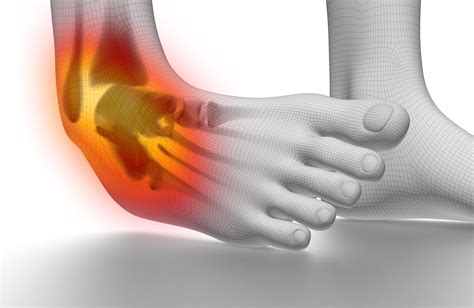Intro
Heal a sprained ankle with effective treatments and recovery methods, including ankle exercises, physical therapy, and pain management techniques to reduce swelling and promote ligament healing and ankle stability.
Spraining an ankle can be a painful and frustrating experience, especially for individuals who lead active lifestyles. Ankle sprains occur when the ligaments surrounding the ankle joint are stretched or torn, often due to a sudden twisting motion or rolling of the ankle. The severity of an ankle sprain can vary, ranging from mild to severe, and it's essential to provide proper care and treatment to ensure a speedy recovery. In this article, we'll delve into the world of ankle sprains, exploring the causes, symptoms, treatment options, and prevention strategies to help you get back on your feet.
Ankle sprains are one of the most common injuries, affecting millions of people worldwide. They can occur during sports, hiking, or even everyday activities like walking on uneven surfaces. The ankle joint is a complex structure consisting of bones, ligaments, and tendons, which work together to provide stability and support. When an ankle sprain occurs, it can cause significant pain, swelling, and limited mobility, making it challenging to perform daily activities. Understanding the causes and symptoms of ankle sprains is crucial in providing effective treatment and preventing future injuries.
The causes of ankle sprains can be attributed to various factors, including poor foot mechanics, weak ankle muscles, and inadequate warm-up or cool-down exercises. Wearing improper footwear or playing sports on uneven surfaces can also increase the risk of ankle sprains. Furthermore, previous ankle injuries or conditions like ankle instability can make individuals more susceptible to sprains. Recognizing these risk factors can help you take preventive measures to reduce the likelihood of ankle sprains.
Understanding Ankle Sprains

Symptoms of Ankle Sprains
The symptoms of ankle sprains can vary depending on the severity of the injury. Common symptoms include pain, swelling, bruising, and limited mobility. In severe cases, individuals may experience difficulty walking or bearing weight on the affected ankle. It's essential to seek medical attention if you experience severe pain, numbness, or tingling in the ankle or foot.Treatment Options for Ankle Sprains

Physical Therapy for Ankle Sprains
Physical therapy plays a crucial role in the rehabilitation of ankle sprains. A physical therapist can help you develop a customized exercise program to improve ankle strength, flexibility, and range of motion. This may include exercises like ankle circles, toe raises, and heel walks. Physical therapy can also help reduce pain and inflammation, promoting a faster recovery.Prevention Strategies for Ankle Sprains

Ankle Strengthening Exercises
Ankle strengthening exercises can help improve ankle stability and reduce the risk of sprains. Examples of ankle strengthening exercises include single-leg balances, ankle circles, and toe walks. These exercises can be performed at home or in a gym, and they're an excellent way to improve ankle strength and flexibility.Rehabilitation and Recovery

Returning to Activity After an Ankle Sprain
Returning to activity after an ankle sprain requires a gradual and progressive approach. It's essential to avoid rushing back into activity, as this can increase the risk of re-injury. Instead, focus on gradually increasing your activity level, starting with low-impact exercises like cycling or swimming. As your ankle strength and flexibility improve, you can progress to more demanding activities like running or jumping.Common Mistakes to Avoid

Importance of Ankle Strengthening
Ankle strengthening is crucial in preventing future ankle sprains and promoting a successful recovery. Weak ankle muscles can increase the risk of ankle sprains, while strong ankle muscles can provide stability and support to the ankle joint. Incorporating ankle strengthening exercises into your workout routine can help improve ankle strength and reduce the risk of injury.Conclusion and Final Thoughts

What are the most common causes of ankle sprains?
+Ankle sprains are commonly caused by poor foot mechanics, weak ankle muscles, and inadequate warm-up or cool-down exercises. Wearing improper footwear or playing sports on uneven surfaces can also increase the risk of ankle sprains.
How long does it take to recover from an ankle sprain?
+The recovery time for an ankle sprain can vary depending on the severity of the injury. Mild ankle sprains can take 1-3 weeks to recover, while moderate ankle sprains can take 3-6 weeks. Severe ankle sprains can take 6-12 weeks or longer to recover.
What are the best exercises for strengthening the ankle muscles?
+The best exercises for strengthening the ankle muscles include single-leg balances, ankle circles, and toe walks. These exercises can help improve ankle strength, flexibility, and range of motion, reducing the risk of future ankle sprains.
We hope this article has provided you with valuable insights and information on healing a sprained ankle. If you have any questions or comments, please don't hesitate to share them with us. We'd love to hear from you and help you on your journey to recovery. Remember to take care of your ankles, and they'll take care of you!
